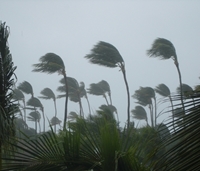Weather can cause a host of concerns for government officials, but one of the best ways to mitigate delayed operations is to develop a comprehensive continuity of operations plan. However, despite having extensive experience with managing specific weather conditions, the paths of storms can go beyond expectations.
In the Philippines, locals are used to seeing about 20 typhoons hit their coastal nation per year. The issue with the Haiyan system is that it was unlike any other storm the country's ever seen, with sustained winds between 147 to 170 miles per hour when it caused havoc to seven islands in the area last Friday.
Prior to the storm, Philipine President Benigno Aquino III recommended that some communities temporarily turn off electricity capabilities to reduce the likelihood of being electrocuted. As many as 720,000 residents were evacuated, the Associated Press reported. Military personnel were also on-call to use helicopters, ships and cargo airplanes to rescue displaced individuals.
"When you're faced with such a scenario, you can only pray, and pray and pray," Southern Leyte Govenor Roger Mercado told the AP.
What has been done after Haiyan
Though the storm traveled through the Philippines fairly quickly with its category five, hurricane-like winds, the typhoon has depleted emergency resources for families, leading them to loot local stores for medicine, water or food, according to Reuters. In Tacloban specifically, the source said that images looked similar to "apocalyptic scenes" in films.
Prior to the storm, President Aquino told the source that the government set aside about $432 million for relief efforts, which could be plenty if Citi Research's estimate of $69 million in lossses is accurate—about 70 to 80 percent of buildings that were directly impacted by Haiyan were destroyed.
Because telephone communication infrastructure was damaged during the storm, an official death toll has not been released as of November 11, experts are estimating as many as 10,000 lives have been lost. Aquino hoped that there would be zero casualties, but perhaps the plans that were set in place for Haiyan were not enough to protect rural residents.
In Tacloban for example, where looting has been more of an issue, winds reached 235 miles per hour and waves from Haiyan caused significant destruction.
"The sheer magnitude and scale of the disaster sort of overpowered all the [continuity] measures, and we're fearing that we'll be finding more dead bodies in those evacuation centers themselves," Alwynn Javier of Christian Aid, told the Guardian on the scene of Tacloban.
Samar and Leyte provinces, which is where Tacloban is located, are the priority for government officials and emergency responders. Nonetheless, the clean up process is expected to take a significant amount of time.
Local officials may not be able to have all their resources on hand in the wake of a storm, but business continuity consultants can help communities create a plan that includes efforts from multiple departments, acting as a multifaceted resource center when stronger-than-usual systems occur.

